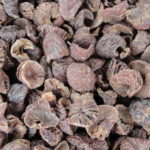
Oral submucous fibrosis is a chronic oral mucosal disease recognised as a potentially malignant disorder. Prevalence has been estimated to be between 2.3% to 8.6% with a malignant transformation rate of 7-13%. A range of drug treatments have been used for oral submucous fibrosis (OSF) including steroids, enzymes, peripheral vasodilators, vitamins, antioxidants, minerals. Recent studies using hyaluronidase and other drugs have provided inconsistent results.
The aim of the review was to assess the efficacy of hyaluronidase combined with corticosteroids in the management of oral submucous fibrosis (OSF).
Methods
Searches were conducted in the Cochrane Library, PubMed, Embase and Web of Science databases. Randomised controlled trials (RCTs) comparing hyaluronidase combined with corticosteroids against other drugs for treatment of OSF were considered. primary outcomes were the maximum mouth opening and a burning sensation. The secondary outcomes were other types of clinical improvement, such as improvements in tongue protrusion, cheek flexibility, patient satisfaction, submucosal thickness and pain while opening the mouth.
Two reviewers independently screened, selected and extracted data from the studies with quality being assessed using the Cochrane risk of bias tool. Continuous variables were reported as mean difference (MD) and 95% confidence intervals (CI) and dichotomous variables as risk ratio (RR) and 95% CI.
Results
- 6 RCTs involving a total of 244 patients (122 test, 122 control) were included.
- All 6 studies were conducted in India.
- 1 study was considered to be at low risk of bias and 5 at unclear risk.
- 5 studies had a duration of 3 months, one 4 months.
- 5 studies used a combination of hyaluronidase and dexamethasone and 1 study hyaluronidase and hydrocortisone.
- Meta-analysis (6 RCTs) showed no statistical difference between hyaluronidase and control groups at 1 month, 2 or 3 months respectively.
| No of studies | MD (95%CI) | |
| 1 month | 4 | 0.32 (−0.92 to 1.56) |
| 2 months | 5 | 0.49 (−0.14 to 1.12) |
| 3 months | 5 | 0.40 (−1.08 to 1.87) |
- All 6 RCTs reported on burning sensation with no statistical difference between hyaluronidase and control groups at 1 month, 2 or 3 months respectively.
| No of studies | MD (95%CI) | |
| 1 month | 4 | 0.54 (−0.62 to 1.71) |
| 2 months | 5 | 0.53 (−0.85 to 1.91) |
| 3 months | 5 | 0.64(−1.07 to 2.35) |
- 2 studies reported on intralesional pain as an adverse effect of hyaluronidase. 3 reported no adverse effects with one study not mentioning adverse events.
Conclusions
The authors concluded: –
weak evidence indicates that hyaluronidase combined with corticosteroids has no additional clinical benefit over control drugs (lycopene, pentoxifylline, aloe vera, dexamethasone, Turmix and isoxsuprine) in improving maximum mouth opening and alleviating the burning sensation in patients with OSF. Therefore, more high-quality, multi-centre randomized controlled trials with larger samples are needed to further assess the efficacy of hyaluronidase combined with corticosteroids in the treatment of OSF.
Comments
The reviewers searched a good range of databases for this review but only identified 6 small RCTs of short duration. Only one of the included RCTs was considered to be at low risk of bias. The review suggests that hyaluronidase combined with corticosteroids has no additional clinical benefit over a range of other agents. However, the evidence supporting many of these alternative treatments is also of limited quality (Dental Elf – Oral Submucous fibrosis blogs). As the authors suggest additional high-quality multi-centre randomized controlled trials with larger sample sizes are needed to properly evaluate the various treatments for oral submucous fibrosis.
Links
Primary Paper
Guo J, Xie H, Mao S, Liang M, Wu H. Efficacy of hyaluronidase combined with corticosteroids in treatment of oral submucous fibrosis: A meta-analysis of randomized controlled clinical trials. J Oral Pathol Med. 2020;49(4):311–319. doi:10.1111/jop.13009
Other References
Dental Elf – Oral Submucous fibrosis blogs
Picture Credits
Thamizhpparithi Maari / CC BY-SA

Dear Derek,
Oral submucous fibrosis is a highly complex disease and multitudes of treatments are suggested for it. Have you commented on all these treatments? or restricting yourself to a few treatments?